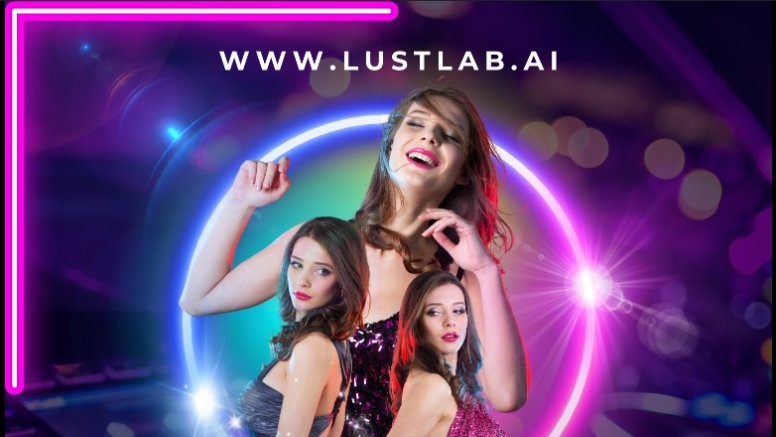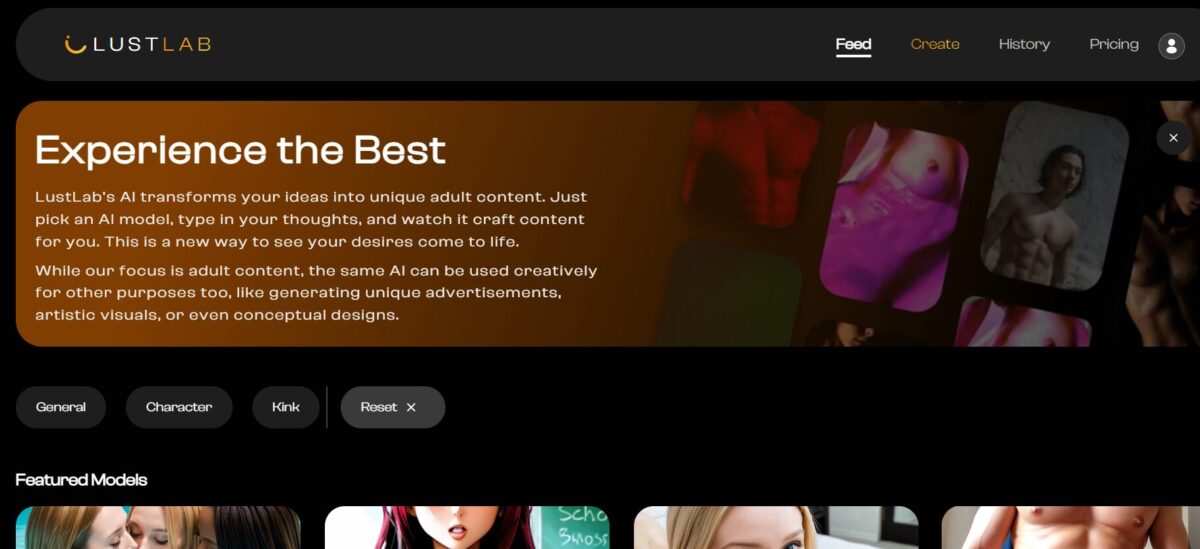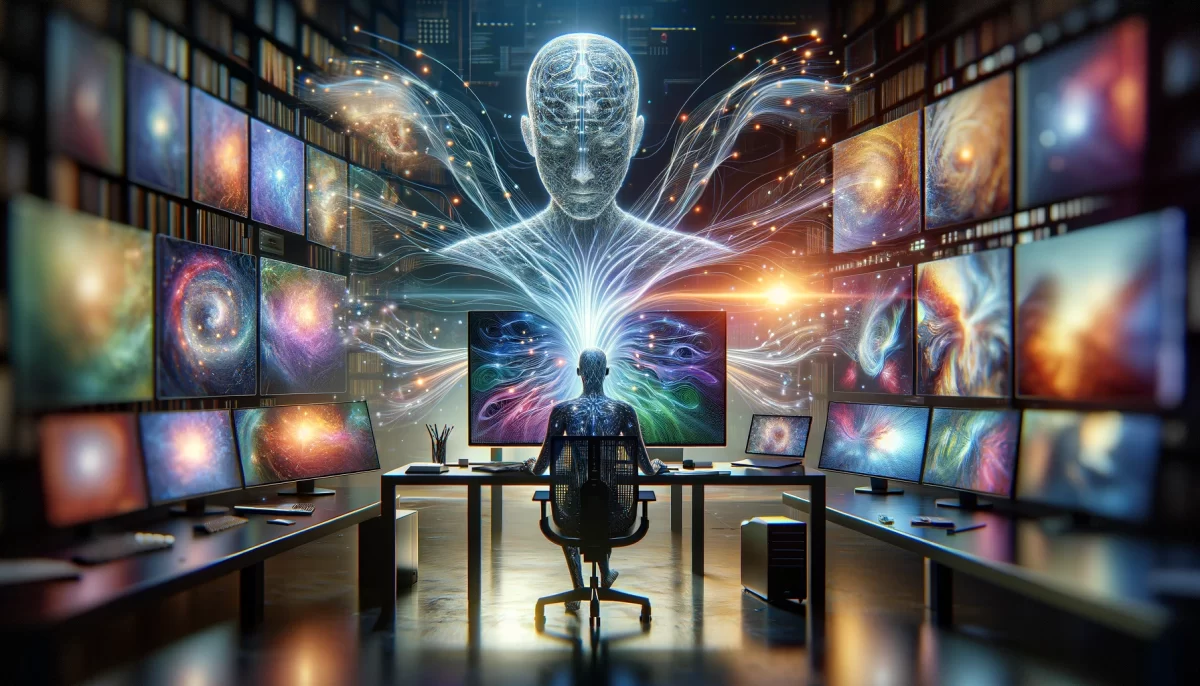LustLab Q&A: The Ethics and Challenges of Running an AI Adult Content Generator
SexForEveryBody.com is supported by our readers. We may earn a commission if you buy through links on our site. Learn more.


Artificial intelligence is disrupting countless sectors, including adult entertainment.
Take, for example, LustLab, an AI-driven adult content platform founded by Alex Georges. Users can bring their fantasies to life by typing them into the AI model.
Launched in February, the site’s popularity underscores a growing consumer demand for deeply personalized adult content. Future updates promise video generation, character customization, and interactive narratives.
In an interview with SexForEveryBody.com, Georges discusses the complexities, potential, and ethical considerations associated with running an AI adult content generator.
What does it mean to be an ethical creator and consumer of AI-generated adult content?

Georges: “For creators, being ethical involves ensuring all data used is properly licensed both before and after creation (upstream and downstream), mitigating bias, and respecting content creators as entrepreneurs.
“Consumers should expect a healthy, guided experience with robust policies to protect sensitive user data, ensuring a respectful and secure environment for all involved. Unlike our competitors, we are not a wild west in our approach.
“What I’m doing from the ethical creation side is putting guardrails on the system. So no underage. No really violent, no named people. Also, from the data side, I am licensing.”
What are the challenges of training your AI adult content generator to represent diversity?
Georges: “One of the significant challenges in offering diverse content is the inherent bias in images and language culturally in our existing media, where inputs like ‘average woman’ might not accurately represent diversity. Addressing this issue requires dedicated bias and sociological research, which involves direct costs.
“Our goal is to identify and correct these biases, ensuring our AI generates content that truly reflects the diversity of ethnicity, gender, and sexual orientation. So, the difficulty is twofold: (1) identifying bias amongst the infinitude of possibilities these systems can create, (2) forcing the systems to unlearn that.”

How do you safeguard your system from being tricked into creating illegal content?
Georges: “We have built proprietary AI stacks for upstream and downstream quality control. The upstream process checks what the user is typing to ensure it does not fit into any of our banned categories. Meanwhile, the downstream process checks the output image to make sure it passes our banned content filters.
“This dual-layer approach helps us maintain the integrity of our platform, ensuring that all generated content aligns with our commitment to legality and ethical standards.
“For example, our platform has a firm policy against nonconsensual sexual descriptions to ensure safety and respect for all users. However, the situation becomes complex when users express fantasies that involve consensual enactments of nonconsensual scenarios. This is a difficult situation even for humans to navigate, and it’s something that the AI is certainly going to fail at.
“The silly way of summing this up is: we want to ban what we intend to ban, and don’t want to ban what we don’t intend to ban. It’s silly I know. But, I can say that in my opinion, we have the least silly content moderator on the market.”
On how LustLab’s AI adult content generator is like a Twinkie

Georges: “When somebody types in a prompt, it does not just hit a single AI model, and then outputs the image. There’s a ton of things in there.
“For instance, when the prompt eventually comes to the image generator, there’s the base image generator, but then there’s another AI that looks at the image and says, ‘Okay, I’m gonna fix up the face.’ Another AI looks at it and says, ‘Okay, I’m going to fix up the hands and the feet.’ We’re also building things in house that will like look at the penis and fix the penis. There is a whole value chain.”
On AI-generative adult video creation

Georges: “It’s fundamentally hard to make a video that looks good. There’s a lot of computational stuff in there like the technical consistency of having one frame go to the next in a cohesive way.
“Just think of a video. Every second there’s 24 frames per second. You need to have an AI system do that. That’s extremely difficult to maintain that consistently. It’s hard enough to create a good quality image in the first place and then, you say, okay, for every second, you need to generate 24 images, not only that, you need those images to be contextually related.
“AI video generation has been around for a bit—perhaps a year or so. Up until a few weeks ago (when OpenAI released SORA), this tech was terrible. It was more or less 3-second terrible GIFs. But, SORA made it so that we now have 1-2min high quality videos without sound.
“Given my projection for how I see this tech progressing, I want us to launch great-quality video realistically within about 3 months. Within that timeframe, hopefully, we can integrate sound as well.”

Jenna Owsianik is a Canadian journalist and sex tech industry expert. She is the Founder and Editor-in-Chief of Sex For Every Body®.
Her expertise covers state-of-the-art sex technologies and the major fields driving innovations in intimacy: robotics, virtual reality, remote sex (teledildonics), haptics, immersive adult entertainment, human augmentation, virtual sex, and sexual health.
A trained journalist with a Masters of Journalism from The University of British Columbia, Jenna’s reporting has appeared on Futurism.com, Al Jazeera English, CTV British Columbia online, CBS Sunday Morning, CBS 60 Minutes, Global News, and CKNW Radio in Canada and the United States.









